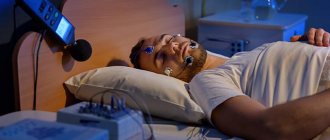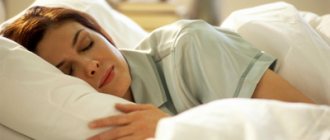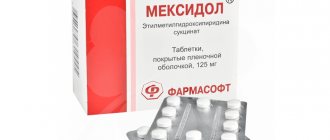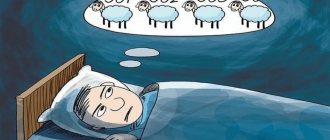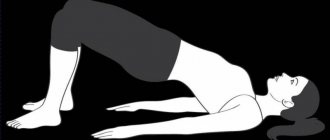Comparative characteristics of Primaxetine, Dapoxetine and other drugs based on dapoxetine hydrochloride
| A drug | Release form; Dosage | Method of use | Duration of action | Manufacturer | Price |
| Dapoxetine | Pills; 30, 60, 90 mg | Orally, one and a half hours before sexual intercourse | Approximately 5-6 hours | India, Emkay | 1600 rubles for 10 tablets |
| Primaxetine | Pills; 30, 60 mg | Orally, one and a half hours before sexual intercourse | Approximately 5-6 hours | Russia, JSC FP Obolenskoye | 510 rubles for 6 tablets |
| Sustinex-30 | Pills; 30 mg | Orally, one and a half hours before sexual intercourse | Approximately 5-6 hours | India, Emcure Pharmaceuticals | 670 rubles for 6 tablets |
| Duratia | Pills; 30, 60, 90 mg | Orally, one and a half hours before sexual intercourse | Approximately 5-6 hours | India, Fortune Health Care, Centurion Laboratories, Cipla | 1380 rubles for 10 tablets |
| Vriligy | Pills; 60 mg | Orally, one and a half hours before sexual intercourse | Approximately 5-6 hours | India, Centurion Laboratories | 1380 rubles for 10 tablets |
| Vander | Pills; 30, 60 mg | Orally, one and a half hours before sexual intercourse | Approximately 5-6 hours | India, KUSUM HEALTHCARE PVT LTD | 1420 rubles for 10 tablets |
| Prejac | Pills; 60 mg | Orally, one and a half hours before sexual intercourse | Approximately 5-6 hours | India, RSM Enterprises | 1490 rubles for 10 tablets |
| Priligy | Pills; 30, 60 mg | Orally, one and a half hours before sexual intercourse | Approximately 5-6 hours | Germany, Berlin-Chemie AG | 5000 rubles for 6 tablets |
| Poxet | Pills; 30, 60, 90 mg | Orally, one and a half hours before sexual intercourse | Approximately 5-6 hours | India, Sunrise Remedies | 700 rubles for 5 tablets |
| Stop Ejac | Pills; 30, 60, 90 mg | Orally, one and a half hours before sexual intercourse | Approximately 5-6 hours | India, Delta Enterprises | 775 rubles for 5 tablets |
How fluoxetine works
The principle of action of fluoxetine can be presented in a highly simplified form, “on the fingers”, as follows.
Our body contains a neurotransmitter - serotonin. It affects many internal processes, including digestion and vascular tone, but primarily on our mental well-being - self-confidence, calmness, and the ability to enjoy life. If for some reason the level of serotonin is insufficient, a person may begin to experience depression, blues, complexes for far-fetched reasons, and always doubt himself.
Why the body may experience serotonin deficiency is a complex and multifaceted question. We are more interested in what can be done to bring its balance back to normal. There are two ways to bring the balance back to normal: increase the incoming flow or reduce the outgoing flow.
The incoming flow can be increased in a variety of ways - for example, systematic exercise or eastern health practices, meditation. The problem is that often a person lacking serotonin does not have the strength to force himself to do this, and then wait for the results.
Another way to increase influx is by drinking alcoholic beverages. When alcohol enters the body, it causes a sharp release of serotonin, which improves mood, internal stiffness disappears, and life begins to seem more pleasant and colorful for a while. And then the intoxication passes, the level of serotonin drops back, and the need to repeat occurs. The negative impact of alcohol on the ability to think and its general destructive effect on the body is obvious to everyone, but, unfortunately, for many people, alcohol abuse is the only known and tested effective way to somehow maintain their psycho-emotional state.
But serotonin is produced in varying quantities by any organism! This means that it is not necessary to interfere with the processes of its production - you can try to somehow slow down its elimination and come to a normalization of the balance on this side. It is on this principle that the effect of fluoxetine is based - it initiates the reuptake of serotonin, preventing it from being eliminated as quickly as before. Coupled with the fact that serotonin is produced in some volumes in one way or another in the body, this eventually leads to an increase in its amount.
This path is much more gentle, since we do not introduce into the body anything beyond what was already in it, and it is much better controlled in terms of the intensity of the impact - unlike alcohol, which provokes an excessively large one-time release of serotonin, or playing sports , the one-time effect of which is insufficient, and the cumulative effect is overly extended over time.
In more scientific language, the principle of action of fluoxetine and other SSRI drugs is described in the instructions for them, and is more clearly shown in the video below.
Prozac
Prozac is the most controversial drug of all antidepressants with the active ingredient fluoxetine. It was originally intended as a medicine for high blood pressure, and later became the most famous antidepressant.
Synonym for Prozac - Fluoxetine, Fluval, Fluxen.
Gives energy, encourages action, relieves hunger.
Found illegal use as a means of losing weight. When taken uncontrolled, it leads to anorexia.
The difference between fluoxetine (Prozac) and a traditional antidepressant is that it has an effect closer to a stimulant than to a sedative.
Prescription for fluoxetine
Fluoxetine is dispensed from pharmacies by prescription, since the decision to prescribe antidepressants and other psychoactive drugs can only be made by a qualified specialist after personal consultation with the patient.
Can I buy fluoxetine without a prescription?
However, it is quite possible to buy fluoxetine even without a prescription. Since this drug does not produce a euphoric effect and is not suitable for use for recreational purposes, and is not a precursor for the manufacture of narcotic drugs, it is not included in the list of drugs for medical use subject to subject-quantitative registration.
How to buy fluoxetine without a prescription
To purchase fluoxetine without a prescription, you need to give the impression of a sane adult who controls himself and understands what he is doing.
It should be understood that the decision to dispense a particular drug without a prescription is primarily a matter of morality. Therefore, it is likely that a pharmacy pharmacist will want to refuse to sell to a person who outwardly can be mistaken for a teenage boy, or to a young girl - because it is no secret that girls tend to abuse fluoxetine for the purpose of losing weight and are not fully aware of the consequences of such behavior, which can lead to negative results.
Well-groomed appearance, age over 25 years, a calm voice and lack of nervousness in behavior will with an 80% probability ensure the purchase of any prescription drug, even in the absence of a paper prescription in hand.
pharmachologic effect
Selectively inhibits the reuptake of serotonin, which leads to an increase in its concentration in the synaptic cleft, strengthening and prolonging its effect on postsynaptic receptors. By increasing serotonergic transmission, it inhibits neurotransmitter exchange through a negative feedback mechanism. With long-term use, it reduces the activity of 5-HT1 receptors. It also blocks the reuptake of serotonin in platelets. Weakly affects the reuptake of norepinephrine and dopamine. It has no direct effect on serotonin, m-cholinergic, H1-histamine and alpha-adrenergic receptors. Unlike most antidepressants, it does not cause a decrease in the activity of postsynaptic beta-adrenergic receptors.
Effective for endogenous depression and obsessive-compulsive disorders. Improves mood, reduces tension, anxiety and fear, eliminates dysphoria. It has an anorexigenic effect and can cause weight loss. In patients with diabetes mellitus it can cause hypoglycemia, and when fluoxetine is discontinued, it can cause hyperglycemia. A pronounced clinical effect for depression occurs after 1–4 weeks of treatment, for obsessive-compulsive disorders - after 5 weeks or more.
Well absorbed from the gastrointestinal tract. The “first pass” effect through the liver is weakly expressed. Capsules and an aqueous solution of fluoxetine are equivalent in effectiveness. After a single dose of 40 mg, Cmax of fluoxetine is achieved after 4–8 hours and is 15–55 ng/ml; when taken at the same dose for 30 days, Cmax of fluoxetine is 91–302 ng/ml, norfluoxetine is 72–258 ng /ml. At concentrations up to 200–1000 ng/ml, fluoxetine is 94.5% bound to blood proteins, including albumin and alpha1-glycoprotein. The enantiomers are equally effective, but S-fluoxetine is excreted more slowly and predominates over the R-form at steady state concentration. Easily penetrates the BBB. In the liver, enantiomers are demethylated with the participation of the CYP2D6 isoenzyme of cytochrome P450 to norfluoxetine and other unidentified metabolites, and S-norfluoxetine is equal in activity to R- and S-fluoxetine and superior to R-norfluoxetine. T1/2 of fluoxetine is 1–3 days after a single dose and 4–6 days with long-term administration. T1/2 of norfluoxetine is 4–16 days in both cases, which causes significant accumulation of substances, slow achievement of their equilibrium level in plasma and prolonged presence in the body after withdrawal. In patients with liver cirrhosis, T1/2 of fluoxetine and its metabolites is prolonged. Excreted within 1 week mainly by the kidneys (80%): unchanged - 11.6%, in the form of fluoxetine glucuronide - 7.4%, norfluoxetine - 6.8%, norfluoxetine glucuronide - 8.2%, more than 20% - hippuric acid, 46% - other compounds; 15% is excreted by the intestines. If renal function is impaired, the elimination of fluoxetine and its metabolites slows down. It is not excreted during dialysis (due to the large volume of distribution and high degree of binding to plasma proteins).
There is evidence of the effectiveness of fluoxetine in eating disorders (anorexia nervosa), alcoholism, anxiety disorders, including social phobia; diabetic neuropathy, affective, incl. bipolar disorders; dysthymia, autism, panic attacks, premenstrual syndrome, narcolepsy, catalepsy, obstructive sleep apnea syndrome, kleptomania, schizophrenia, schizoaffective disorders, etc.
Contraindications
Primaxetine and Dapoxetine should not be used in the following cases:
- intolerance to drug components;
- priapism;
- cavernous fibrosis;
- anatomical deformation of the genital organ;
- ischemic disease;
- glaucoma;
- bleeding;
- epilepsy;
- angina pectoris;
- severe impairment of the kidneys and liver;
- bipolar disorder;
- age under 18 years.
Primaxetine and Dapoxetine should not be used simultaneously with the following drugs:
- antidepressants;
- preparations based on St. John's wort and lithium;
- Linezolid;
- Telithromycin;
- Ketoconazole;
- Saquinavir;
- Tramadol;
- Tryptophan;
- Ritonavir;
- Nefazodone;
- Atazanavir.
Side effects
— From the central nervous system: possible anxiety, tremor, nervousness, drowsiness, headache, sleep disturbances. - From the digestive system: diarrhea, nausea are possible. - From the metabolic side: increased sweating, hypoglycemia, hyponatremia are possible (especially in elderly patients and with hypovolemia). — From the reproductive system: decreased libido. — Allergic reactions: possible skin rash, itching.
Other: joint and muscle pain, difficulty breathing, increased body temperature.
Instructions
The dosage and frequency of taking the drug depends on the type of disease for which treatment was prescribed. To get rid of bulimia, 60 mg of Fluoxetine per day is first prescribed. It is taken in three stages - morning, afternoon and evening, 20 mg each. The duration of treatment is no more than two weeks.
Depressive conditions are eliminated by using the drug at a dosage of 20 mg per day, mainly in the morning. The patient is then monitored for a month. If there is no improvement, the dosage of the drug is increased by 20 mg. Application is divided into two periods - morning and evening. If required, the doctor increases the dosage to 80 mg per day.
The drug is also used for dysphoric, bipolar or obsessive-compulsive disorders. It can be used for trichotillomania in cases where therapy does not bring results.
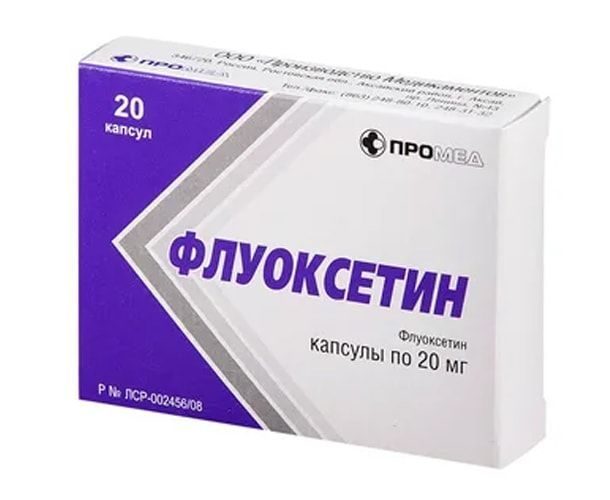
The use of the drug is prescribed in cases of depressive disorders. As a rule, the drug is not used to treat children under ten years of age.
Fluoxetine is prescribed for the treatment of the following mental illnesses:
- Depression of any degree. The drug can be used in combination with other drugs to achieve the desired effect.
- OCD (obsessive-compulsive disorder).
- Alcohol addiction.
- Bulimia nervosa. The effect of the drug includes a side effect - decreased appetite. Therefore, it is often prescribed to treat bulimia. In this case, the patient gets rid of nervousness and an irresistible desire to eat.
- Obsessive states.
Fluoxetine helps get rid of depression
The use of the drug Fluoxetine has the following contraindications:
- individual intolerance to the main active ingredient, auxiliary components;
- pregnancy;
- breast-feeding;
- the presence of seizures and epilepsy;
- pathologies of the urinary system;
- glaucoma of any stage;
- prostate enlargement.
The side effects of Fluoxetine have been carefully studied. In some cases, when using the medicine, unpleasant consequences can be noted:
- decreased or increased libido;
- lack of orgasm (in women);
- sudden weight loss;
- development of paranoia, insomnia, anxiety;
- feeling of dry mouth or excessive salivation;
- changes in hormonal levels, which leads to loss of fluid and sodium in the body;
- tremor of the arms or legs.
The drug does not have a negative effect on the cardiovascular system, therefore it is safe for use in elderly patients.
Overdose
Excessive oral use of Fluoxetine has serious consequences. An overdose of the drug is accompanied by the presence of agitation, epilepsy, prolonged vomiting and nausea. The appearance of tachycardia is observed.
To eliminate an attack of poisoning, symptomatic therapy is carried out. It is necessary to stop taking the drug and perform gastric lavage. Further, depending on how the overdose of Fluoxetine is expressed, an antipyretic or anticonvulsant is prescribed.
The instructions for using Fluoxetine are very important. It cannot be ignored under any circumstances. Before you start taking it, read the insert for Fluoxetine very carefully. Here you can find answers to the most frequently asked questions:
- indications;
- contraindications;
- dosage;
- possible side effects and much more.
So, according to the instructions, an overdose of Fluoxetine may occur. This will be indicated by the corresponding symptoms in the form of:
- nausea;
- vomiting;
- seizures, etc.

There is no specific “antidote” for overdose, so treatment should be symptomatic. Gastric lavage and taking activated charcoal will help. If a person begins to have convulsions, they are given tranquilizers.
The instructions also contain information that “Fluoxetine” is strictly contraindicated for women during pregnancy and lactation. It was noted that women who took the drug during pregnancy increased the risk of premature birth. Fetal developmental anomalies and poor adaptation of newborns are also possible. Therefore, it is better not to risk the health of the unborn child and refuse to take Fluoxetine during pregnancy.
The conditions for taking Fluoxetine with other drugs are also indicated. In no case should treatment be carried out simultaneously with MAO inhibitors, otherwise the development of side effects in the form of:
- hyperthermia;
- chills;
- increased sweating.
Simultaneous administration of Tryptophan will enhance the serotonergic properties of the drug. You should also refrain from taking medications that contain St. John's wort, because undesirable effects are possible.
Indications for the use of Fluoxetine are wide, which indicates its effectiveness:
- For bulimia. Very often, Fluoxetine is prescribed for this type of mental disorder. With bulimia, a person experiences an uncontrollable feeling of hunger, which causes rapid obesity and, as a result, an obsession with excess weight. “Fluoxetine” in this case is prescribed not for weight loss, but in order to stop the development of bulimia nervosa. Prescribe 60 mg of Fluoxetine, 2-3 doses per day.
- From anxiety. The main indication for use is anxiety syndrome. Therapy lasts 3-4 months, the dosage depends on the patient’s condition and is prescribed individually.
Once again, we emphasize that this medicine is not prescribed during pregnancy and is strictly contraindicated!
ATTENTION!
The information on the page you are viewing is created for informational purposes only and does not in any way promote self-medication. The resource is intended to provide healthcare workers with additional information about certain medications, thereby increasing their level of professionalism. The use of the drug " Fluoxetine " requires consultation with a specialist, as well as his recommendations on the method of use and dosage of the medicine you have chosen.
Fluoxetine is a powerful antidepressant. Its action is also associated with a stimulating effect. Taking this drug causes an increase in mood, relief from stress, and absence of feelings of fear and anxiety. Due to such a pronounced effect on the body, the drug is potent. Accordingly, it is not available for free sale and fluoxetine can only be purchased with a doctor’s prescription.
What is this?
The development of society is moving to a new stage, and with it, mental pathology – depression – is becoming more and more widespread.
The pharmaceutical industry was looking for a means to combat depression, and in the late 1950s antidepressants appeared: iproniazid and imipramine. Currently, depression is treated at home. Therefore, demands are placed on antidepressants in their ability to positively influence the personal growth and standard of living of patients. All antidepressants have the inherent property of having a beneficial effect on improving the mood and mental state of the patient.
The most popular and frequently used is Fluoxetine; its use requires a prescription from a doctor.
The original drug has more than a dozen analogues of fluoxetine:
- Apo-fluoxetine;
- Bioxetine – tablets;
- Deprex – capsules;
- Deprenon – capsules;
- Prozac - capsules;
- Profluzak;
- Phloxet;
- Fluval;
- Fluxonil;
- Fluoxetine Hexal;
- – “” – Lannacher;
- – “” – Nycomed;
- – “” – Ozone 20 mg and 10 mg;
- Fludak;
- Frames.
All of these drugs contain the active ingredient fluoxetine.
Analogs of fluoxetine as an active substance are:
- paroxetine;
- sertraline;
- escitalopram;
- citalopram;
- fluvoxamine;
- milnacipram.
Prohibited during pregnancy Prohibited during breastfeeding Prohibited for use by children Restricted for older people Restricted for liver problems Restricted for kidney problems
Fluoxetine is a medication from the group of antidepressants. It goes on sale in the form of gelatin capsules. The mechanism of action of the drug is determined by the properties of the active ingredient - fluoxetine. Since the medicine affects the nervous system, it cannot be purchased without a prescription.
Packaging of the drug Fluoxetine
The drug (hereinafter referred to as the drug) is an inhibitor of the reuptake of serotonin molecules at the synapse of neurons in the central nervous system (CNS). It is characterized by stimulating, anorexigenic, antidepressant properties, and helps eliminate signs of depression.
Main indications for use:
- Depressive states.
- Cinemaxia.
- Obsessive-compulsive disorder (hereinafter referred to as OCD).
It is not recommended to take the medicine for patients with suicidal tendencies, intolerance to components, epilepsy, renal or liver failure, glaucoma, prostate adenoma, and bladder atony.
The treatment regimen is drawn up by a qualified specialist, taking into account the characteristics and severity of the pathology.
Today, the group of antidepressant drugs (hereinafter referred to as drugs) offers a large selection of fluoxetine analogues. They may differ in chemical formulas and price, but have a similar effect on the body.
How to get a prescription
Prescription of the presented medicine is possible if the patient is diagnosed with depression, as well as a number of mental disorders. For example, anxiety symptoms, obsessions, schizophrenia. In addition, it is recommended to take it for alcoholism during a sharp withdrawal from alcohol.
However, a doctor cannot simply issue a prescription based on a patient's request. Confirmation of the appropriate condition is required. You need to undergo an examination, receive one or another diagnosis, and only then the doctor will decide on the prescription of this drug. However, he has the right to refuse to issue such a prescription, replacing fluoxetine with another, less powerful drug.
Difficulty in obtaining it yourself
You can get a prescription for this drug by going to the clinic yourself. However, this comes with difficulties. They need to be presented in more detail:
- The manifestations listed above often exist in combination with each other. Therefore, you need to visit several doctors to identify specific indications for taking the drug;
- visiting a narcologist, psychiatrist and other specialists will require a lot of time waiting in queues. At the same time, doctors are often located in different departments, distant from each other;
- You will need to take tests for each doctor. Accordingly, you will have to visit medical doctors more than once.
In this case, you can simply contact the company and buy the desired prescription on the same day.
Prices of Fluoxetine and its analogues
The cost of the original drug depends on the number of tablets and the dosage of the active component. It ranges from 36 to 115 rubles. The country of origin also matters. Tablets produced in Russia cost less than foreign ones. In this article you can find out the prices of the main substitutes for this medication.
| Name of the medication | Dosage/quantity | Price (in rubles) |
| Prozac | 20 mg No. 14 | 472 |
| Fluoxetine Canon | 20 mg No. 30 | 105 |
| Fluoxetine Lannacher | 20 mg No. 20 | 125 |
| Profluzak | 20 mg No. 20 | 115 |
To purchase an original medicine (medicine) or its analogue, you must present the pharmacist with a prescription from your attending physician.

